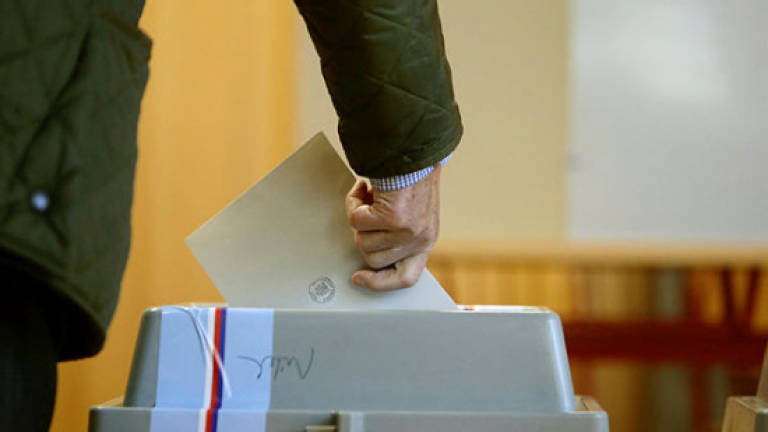Five things to know about Czech Republic

THE Republic, holding a two-day general election which ends Saturday, has been an EU member since May 1, 2004, but has chosen to remain outside the eurozone for the time being.
Here are five key points about the country and its history.
Independence in 1993
In 1918, Western Slavs shook off Austro-Hungarian rule, establishing Czechoslovakia, a new country comprising Czechs and Slovaks. But by 1938, Nazi Germany annexed its borderland regions called Sudetenland and a year later it took over the Czech territories of Bohemia and Moravia, while Slovakia became a satellite state of the Third Reich.
Czechoslovakia regained its autonomy in 1945. In February 1948, a Communist coup brought the country into the orbit of the Soviet Union.
The "Prague Spring" of 1968 was crushed by Moscow and its allies, but in Nov 1989 the Velvet Revolution ended four decades of Soviet domination, propelling dissident playwright Vaclav Havel to the Czechoslovak presidency.
Czechoslovakia split into two states, the Czech Republic and Slovakia, in 1993. Havel became the first Czech president in Feb 1993.
Ruling coalition
The current centre-left government comprises the leftwing Social Democrats of Prime Minister Bohuslav Sobotka, the centrist ANO movement and the smaller centrist Christian Democrats.
It was appointed by the president in Jan 2014 after a political crisis triggered by several corruption scandals that had toppled the centre-right government of Petr Necas in June 2013.
The president of this parliamentary democracy is elected directly for a five-year term. The first president elected this way is current head of state Milos Zeman, a pro-Russian, pro-Chinese veteran leftwinger with strong anti-migrant views. He has announced he will run for a second term in the next vote in Jan 2018.
Economic recovery
Heavily dependent on car production and exports to the eurozone, the Czech economy recovered from a long crisis in 2013. In 2015, it grew by 5.3%, followed by 2.6% growth last year. The central bank predicts economic growth of 3.6% for this year.
In 2016, the country's three car plants – Volkswagen's Skoda Auto, South Korea's Hyundai and TPCA, a joint venture of Japan's Toyota and France's PSA Peugeot Citroen – produced a record 1.344 million vehicles, with output growing for the third year in a row.
EU, NATO, Schengen
The first ex-Communist country to join the OECD in Nov 1995, the Czech Republic became a Nato member in 1999 before joining the European Union in 2004. It is also a part of Europe's Schengen visa-free area, but has resisted adopting the euro, favouring its own koruna currency.
Prague, architectural gem
With no access to the sea, this country of 10.6 million people borders Poland, Slovakia, Austria and Germany.
Its capital Prague is a popular tourist magnet, boasting a picturesque historic centre put on the UNESCO heritage list in 1992. Under the dominant Prague Castle, the old town split by the Vltava river is rich in architectural gems, Renaissance and Baroque palaces, Gothic cathedrals and art deco buildings illustrating its thousand-year history.
Every year, millions of tourists cross the Vltava on Charles Bridge, the most popular medieval site, adorned with three dozen sculptures, whose foundation stone was laid on July 9, 1357 by Czech King and Holy Roman Emperor Charles IV. — AFP